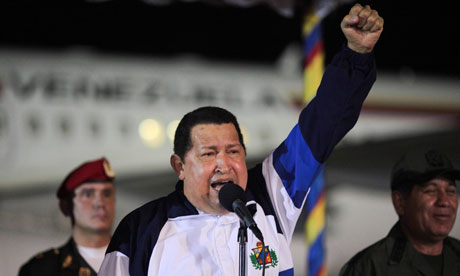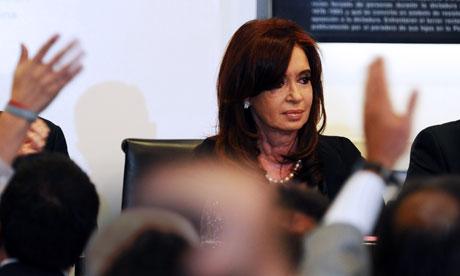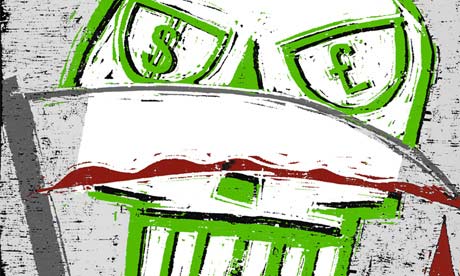By Ravinder Kaur in EPW
While the Arab revolts were challenging
the western hegemony
to pave way for grass-roots
democracy last year, India was witnessing
a different kind of mass mobilisation
dramatically named by a few in the
media as the “second struggle” for Independence.
Delhi – like Cairo, Tunis,
Damascus and Manama – had become
the centre of protracted though nonviolent
popular protests with demands
for accountability from the corrupt ruling
elite. The media even took to describing
the protests affectionately as “our Arab
spring” and likened the site of protests in
Delhi as “our Tahrir Square” – imbuing
the event with revolutionary fervour
and turning it into a kind of catharsis
necessary to purify a corrupted postcolonial
nation. That these protests were
largely composed of a restless youth
population – though reliably steered by a
non-partisan “Gandhian” patriarch –
only served to make the comparisons to
the Arab revolts seem natural. Yet the
differences could not be starker. Unlike
the uprisings in west Asia that sought
to address the societal crises – rising
inequality, infl ation, massive unemployment,
lack of political freedoms and
disenchantment with the ruling elite –
as political subjects seeking political
change, the popular mobilisation in
India has primarily been the work of
“apolitical” activism more in tune with
the Tea Party movement of the United
States given its neo-liberal fantasies of
“small government”.
This essay sets out to unpack the economy
of the moral outrage we have witnessed
the past several months and which
continues to occupy a central position on
the nation’s agenda. The prime question
that needs to be asked then is, how and
when did corruption become the most
pressing crisis facing the Indian nation?
And in whose interest has this project
of moral cleansing of the nation been
affected? This line of enquiry opens up
some provisional answers that help explain
a movement that has built upon a
successful coalition of as diverse interests
as the techno-elite, professional middle
class, the urban poor, the religious and the
secular-minded individuals, big corporations,
global non-governmental organisations
(NGOs) and localised neighbourhood
associations. Three crucial interrelated
developments within the Indian
socio-political landscape can already
be noted in this regard. First, the neoliberal
conception of the nation-form as
commodity-form that India has steadily
transformed into since the 1990s economic
liberalisation. The success of the
nation is now no longer measured by its
ability to secure territory and the welfare
of its people alone, it is primarily
measured by its ability to attract capital
investments and maximise revenues.
The Indian nation has acquire d a new
nomenclature – India Inc. – that is vastly
popular within the corporate and policymaking
circles. The addition of the suffi
x “Inc.” highlights the corporate character
of the nation that has become its
prime identity in the past two decades.
It is following this neo-liberal logic of
nation as corporation that Prime Minister
Manmohan Singh is often addressed as
the chief executive offi cer (CEO) of India.
This popularly bestowed title gains particular
currency in his case as he is seen as
the main architect of the Inter national
Monetary Fund (IMF)-World Bank-led
economic reforms in early 1990s.
Second, corporations as well as global
bodies like the World Bank have increasingly
become invested in initiating
reform s at the social level in India. The
widely shared belief is that India is unable
to reach its full potential as a global economic
powerhouse precisely because of
socio-cultural constraints. The culture
of corruption – bribes, nepotism, and lack
of transparency within the governmen t
– is seen as one of the biggest impediments
to complete market reforms. The
anti-corruption mobilisation, thus, has
substantial support from the corporate
sector including several corporationcontrolled
newspapers and television
channels. Third, not only is a corrupt
government found detrimental to India’s
rise as a great power, the government
itself is seen as an impediment in the
path to that goal. A particular feature of
the anti-corruption protests is the outrage
against the government as the primary
source and cesspool of corruption. This
popular view is in line with the neoliberal
belief in “less government” and
more market as the path to economic
growth and prosperity. In other words,
to speak of politics – and anti-politics –
of anti-corruption mobilisation in India
today only in terms of “the people”,
“government” and “civil society” is to
miss out on new realities that constitute
the reformed Indian nation. Not only do
corporations play a dominant though
unpublicised role in the currents of Indian
politics, the Indian nation itself has been
reinvented as a corporate body whose
legitimacy is derived from its ability to
maximise revenues and profi ts. This nexus
between corporations, global fi nan cial
institutions and the anti-political populist
rage is key to understanding the new
agenda of nation’s moral cleansing.
What follows is an attempt to outline
the corporate logic of the moral panic
in India.
2 Nation as Commodity
In the past two decades, the free-market
logic of the nation state has increasingly
become visible not only in the attempts
to patent national commodities, but the
nation itself. The nations, especially those
most newly reformed such as India, are
branded, graded and placed within the
global hierarchy of nations according to
their success in attracting foreign direct
investments (FDIs) as well as revenues
from tourism. This commodifi cation of the
nation – as a profi t-making enterprise –
lies at the heart of this great neo-liberal
transformation. The unique assets of
the nation – its culture, history, natural
resources, human labour, locality, and
the inalienable essence that makes it
authentic – are commodifi ed in order to
maximise its capital and expand its power
in the global scheme of things. Nationality
Inc. blurs the lines between the state
and market to an extent that the state no
longer merely exists as the “monitor” of
the market, instead the market becomes
the underlying principle of the state.2 As
Jacques Ranciere (1999), recalling Marx’s
once-controversial assertion that governments
are simple business agents for
international capital, suggests, it is now
an “obvious fact…the absolute identifi -
cation of politics with the management
of capital is no longer the shameful secret
hidden behind the ‘forms’ of democracy; it
is the openly declared truth by which
our governments acquire legitimacy.
The role of the state as an active economic
agent – a corporation in search of
ever greater profi ts and revenues – has
always existed, the neo-liberal thinking
has only brought out in plain sight the
well hidden secret: the collusion between
the domain of politics and the
domain of the economy. In short, the
neo-liberal turn has surfaced the disarticulations
of the hyphenated dialectic
condition that binds the nation with the
state, and instead fully revealed the
corporate logic of the nation. India Inc.,
the new nomenclature for the nation is,
thus, suggestive of the new species of relations
between the market and the nation
where the Indian state appears as a
facilitator for the circulation and maximisation
of capital.
A significant part of the economic
reforms which opened India to flows of
FDI, private participation in the domain
of government, and withdrawal of the
state from the social sector has been the
attempt to brand the nation in the global
market. As early as 1996, the Indian
state had created a subsidiary agency of
the Ministry of Commerce – India Brand
Equity Foundation (IBEF) – with the primary
task of marketing “Made in India”
products around the world. This lagging
project was revived in late 2002 by the
National Democratic Alliance reform
minded government though with a redefi
ned task – to not only showcase Indian
brands abroad but transform India itself
into a corporate brand. The offi cial brief
was now to “celebrate India” as the “destination
of ideas and opportunities” in
order to bring in FDI as well as invigorate
tourism.
And by 2004, Brand India was
set in motion to “build positive economic
perceptions of India globally”.6 The new
initiative not only formalised the corporate
approach to governing the nation, it
also confi rmed the alias by which the
nation is known in the corporate world
– India Inc. – an entity consequently
gover ned by a CEO rather than a political
representative.
One of the key tasks for India Inc.
unsurprisingly, then, has been that of
image making primarily for a global
audience – corporate investors, leaders of
global fi nancial institutions and wealthy
tourists. Two Delhi-based advertising
agencies specialising in place branding
were recruited to create a distinctive
logo, a slogan and a “business kit” to be
presented through glossy campaigns in
print and electronic media.8 While one
of these agencies is responsible for creating
a more popular and vastly visible
global campaign called “Incredible India”
mainly to attract foreign tourists, the
second agency works hand in hand
though with little visibility within India
to enhance “Brand India” in the global
fi nancial markets. Brand India unveils
its annual advertising blitzkrieg spectacularly
at the World Economic Forum,
Davos amidst an assembly of corporate
heads, leaders of industrialised nations
and functionaries of global fi nancial
institutions. The idea is not only to
familiarise the world fi nancial leaders
about the current state of Indian economy
but also to report back on the progress
made by the Indian state vis-à-vis
economic reforms.
The corporate sector in India together
with the global financial institutions
perceives the 1991 economic reforms as
incomplete and partial, and each successive
government is therefore routinely
asked to undertake further “unshackling”
of the economy and take the reform to
its logical conclusion: a fully liberalised
market economy without regulatory
oversight and constraints affected by the
social and environmental costs. Davos is
one such prominent location where reformed
nations are reviewed in a global
setting – the “good governments” are
celebrated, whereas those lagging behind
are warned and encouraged to follow
suit. India Inc. has been both a subject of
celebration and warnings about its inability
to reach its potential. The little understood
complexities of Indian sociopolitical
order – caste stratifi cations, religious
divisions, communal violence,
and more importantly now, the “culture”
of corruption – are often posed as impediments
in India’s path towards economic
growth. The question confronting the
corporate state – an effective imagemachine
– is: how to create a desirable
image of the nation while erasing or
minimising the effect of all that “holds it
back”? Or more concretely, how to
project India as the most “attractive” investment
destination in order to lure
away potential investors from other
competing nations in the world.9 The
answer, in branding parlance, is to minimise
the “negatives” – associations with
poverty, archaic social practices, political
turbulence, and corrupt practices –
to halt the adverse news flow about the
nation in global media. This constant
quest for an attractive brand image and
the fear of the contaminating effect of
powerful negatives such as corruption,
then, is a partial explanation for the
moral discontent that is currently raging
in India.
Economy of Moral Panic
Anna Hazare’s protest agitation began in
the heart of Delhi – Jantar Mantar, a
part tourist attraction, and part zone of
protest – chiefl y to demand the passage
of the Jan Lokpal Bill (People’s Ombudsman
Bill) as a strong anti-corruption
instrument. The crowds that thronged
the protest site – adorned with symbols
borrowed from the repertoire of Hindu
nationalists and to the chants of Vande
Mataram – in support of the Bill had
pitted themselves not only against the
government’s version (the Lokpal Bill),
but the entire political class as such. And
if there was an enemy in this struggle,
then it was the fi gure of the politician –
usually depicted as a slick character
with easily compromised morals and infi
nite greed for ill-gotten wealth stashed
away in Swiss vaults – that had permeated
the popular imagination egged on by
the rhetoric of protest. The less visible
spokes of the government machinery –
the bureaucrats – were found equally
guilty of entrenching a system that did
not move without adequate grease in the
form of bribery and nepotism. In other
words, it was the domain of government
that had been identifi ed as the root
cause of the rot and therefore in need of
instant repair. This form of identifi cation
also disclosed the collective body of
“the people” in a state of isolation from
the government. Not only was the government
viewed as corrupt, the very
idea of state and government was now
shaped through the discourse of corruption.
Accordingly, the provisions of the
people’s bill focused mainly on the
conduct and practices of public functionaries
which through a series of legislations
– disciplinary measures and
punishment – could be rectifi ed and
controlled. The wider socio- economic
landscape – social injustice and inequities
– around which the notion and practice
named as corruption thrives was hardly
the focus of the protests.
The most telling aspect of both the
competing legislative bills, however, was
the stark absence of any provisions to
scrutinise corporate corruption. This absence
is particularly signifi cant as most
of the scams in India are related to
murky corporate practices ranging from
provision of supposedly mandatory kickbacks,
bribes to impart fl exibility to
existing rules, purchasing infl uence
within the government to ensure friendly
policies, evading taxes, and committing
fi nan cial fraud. Yet, the corporations
appear in the debate, if at all, as victims
of corruption in the domain of government
that hinders the nation’s economic
growth. This is not entirely unsurprising
in a neo-liberal state where the greatest
fear is the fear of failure to attrac t investments
and a slowdown in the pace
of economic growth. But what is surprising
is the intensity with which this
logic has fi ltered to the core of elite politics
in India to an extent that corporate
excesses are more or less effaced from
the public debate.
Corruption has long been seen as an
impediment towards free market and
economic growth. And in the anticorruption
movement, the corporations
have been able to fi nd articulations of
their own interests that seemingly are in
tune with the public outrage harnessed
successfully by the civil society. Even
before the popular protests had taken
off, the Federation of Indian Chambers
of Commerce and Industry (FICCI) had
issued a statement calling for probity in
governance in order “to preserve India’s
robust image and keep the growth story
intact”.10 This was followed by an open
letter by 14 prominent individuals – corporate
leaders, reform-minded economists
and bureaucrats assembled together
under the sign of the “citizen” –
who identifi ed corruption as the “biggest
issue corroding the fabric of our nation”.
The recommendation of the group was
to address the “governance defi cit” that
had permeated every level of state institutions,
and to restore the self-confi dence
of Indians in themselves and in the Indian
state.11 When the protest began gathering
steam, the biggest support to fi ght
corruption came from the corporate
sector. The corporate leaders expressed
their support publicly proclaiming that
“we completely support Hazare in his
fi ght against corruption which has been
denting India”.12 The corporate voices
had not only begun addressing Anna
Hazare as a moral crusader, but in one
instance also as “prime minister” – the
only one morally clean and worthy of
leading the nation – to show their disaffection
with the elected representatives.
13 In other words, the malaise
ailing the nation had been primarily
isola ted within the domain of government,
and only by exposing and emptying
it out in the public could the nation
be put on the path of purifi cation.
The power and infl uence of the corporations
in the anti-corruption movement
can be gauged from the fact that hardly
any critical voices have been heard
demanding corporate accountability.
Yet, bribe-giving or purchase of infl uence
in the government is often seen by
both Indian and foreign businesses as
an acceptable practice. In a survey of
European fi rms conducted earlier this
year, about two-thirds of corporate
employees named bribe-giving as a widespread
strategy to win contracts and
retain businesses.14 Similarly, a Bribe
Payers Index (BPI) found corporate corruption
to be rampant in the “emerging
markets” and particularly entrenched in
sectors like infrastructure development,
construction, mining, oil and gas explorations
and property development.15 The
State’s fear of losing corporate investments
and the attendant possibility of
job creation and revenue generation
means that there is little challenge to
corporate corruption. Instead, the neoliberal
states go out of their way to facilitate
businesses and overlook any exce sses.
This anxiety of alienating corporations
was visible in the controversy over the
2G court case. The union minister of law,
Salman Khurshid, chided the Supreme
Court for not granting bail to businessmen
accused in the 2G spectrum scam.
He was reported as saying, “If you lock
up top businessmen, will investment
come?” to voice his concerns over threat
to the pace of economic growth and
investment in the nation.16 In this case,
17 individuals were arrested and prosecuted
including the former Telecom
minister A Raja and several senior executives
from some of the largest telecom
companies in India. But somehow the
corporate executives escaped the harsh
probing of their conduct in the public
domain whereas the politician involved
was transformed into a symbol of all the
systemic failures and corruption plaguing
the nation. In short, it is the fi gure of
the politician that is frequently evoked
to rouse public passions in the anticorruption
movement while the businesses
are either seen as hapless victims
of the “system” or kept out of public
spotlight when the irregularities are too
momentous to be ignored.
4 Global Panacea of Reforms
The excessive focus on government
together with the near effacement of
corporations from the anti-corruption
discourse is neither an accident nor an
oversight. Rather it is a refl ection of the
global processes that began intensifying
in the past two decades surfacing civil
society as a key player in the domain of
governance. Central to this shift was not
only the lack of belief in the State’s capability
to check corruption, but the fact
that the institution of state per se was
viewed as intrinsically corrupt. The very
defi nition of corruption, at the height of
modernisation theory, came to be particularly
tied to the misuse of public offi ce
for private gains.17 Any checks against
corruption would, then, logically mean
checks against the government itself
which was now largely viewed through
the lens of corruption. This spectre of
corruption became a familiar theme that
was often played out in the context of
the Third World thought to be in particular
need of western style rational
modernisation and development to overcome
the culture of corruption. The anticorruption
campaigns, thus, were initiated
in harmony with the push for structural
reforms in developing countries – more
free market equalled less corruption.
In the early 1980s, coinciding with the
thrust towards structural reforms, the
global institutions such as the World
Bank and IMF began turning their focus
on the “cancer of corruption”18 on the
one hand, and greater collaboration
with civil society organisations (CSOs)
on the other.19 This was the moment
when one could witness the successful
co-option of the robust tradition of protest,
dissent and speaking truth to power
– by ordinary people against hegemons
– by powerful global institutions to
serve its own agendas. While corruption
was necessarily seen as endemic in the
nation states of the South,20 the CSOs
were encouraged and “empowered” as a
way to minimise the infl uence of the
corrupt and ineffi cient states.21 This focus
on indivi dual cooperation at societal
level outside the domain of government
was argued forcefully as “social capital”
– a cost-effective mode that successfully
limits the government and promotes
modern democracy – by neo-liberal
advocates such as Francis Fukuyama.22
The long-standing tradition of public
activism for public good was, thus, successfully
harnessed to the realisation of
neo-liberal ideals of small government.
Accor ding to World Bank’s estimates,
the CSO sector worldwide is currently
worth $1.3 trillion annually employing
about 40 million people, and channels
fi nancial assistance of about $20 billion
to the developing nations per year.23 The
CSOs are involved in up to 81% of the
Bank-funded projects with a presence in
over 100 nations around the world.
In a recent report published at the
height of the anti-corruption movement,
these seemingly disparate themes – of
corruption, civil society, popular protests
and liberalised markets – were joined
together to weave the narrative of moral
breakdown in the society and its cost to
the Indian economy. The report begins
by evoking the World Economic Forum’s
Global Competitiveness Index24 that
lists a number of freedoms necessary for
a nation’s economic competitiveness
(business freedom, trade freedom, fiscal
freedom) of which India particularly
suffers from the lack of the “freedom from
corruption” that could derail its projected
economic growth and may result in a
volatile and economic environment.25
Nearly one-third of the respondents
believed corruption to be particularly
detrimental to India’s growth poten tial,
while 93% agreed that “corruption
negatively impacts the capital market”.
The lowered levels of ethical values in
the society were no longer merely a
matter of individual immorality and
concern, they had a severe economic
cost for the nation especially its brand
image in the world. The issue of personal
and corporate corruption – evasion of
taxes, for instance – was explained away
in terms of tight regulation and high tax
rates that help produce corruption in
the society.
The successful harnessing of populist
indignation to a cause much favoured by
corporations and global financial institutions
– of free markets – is best illustrated
in the solutions offered to regulate
corruption. Here the provisions of the
people’s bill promoted by the civil societ y
are mirrored in those favoured by the
corporations.26 These include stringent
punishment, high penalties and zero
tolerance to corruption through the establishment
of fast track courts, and special
enforcement powers to the Lokayukta,
or Ombudsman’s offi ce. Remarkably, in
step with the neo-liberal thinking, the
state makes reappearance here in its
new recommended role as that of a strict
regulator of anti-corruption laws and
facilitator of suitable conditions for businesses
to operate in. In this vein, Chinese
state’s solutions to control corruption are
often quoted admirably by the business
community and these include high fi nes
and even imposition of death penalty.27
The Indian model, on the other hand,
with its democratic messiness is seen as
less than ideal for businesses to fl ourish
in. It is ironic that the neo-liberal language
of freedoms that is usually adopted
to advocate for free markets is rendered
speechless when it comes to corruption.
Not only does it look towards an
authoritarian state such as China for
inspiration, it also resurrects the much
despised state to provide legal framework
to control corruption.
Consensual Politics
While the anti-corruption protests have
been widely analysed, and at times even
celebrated, in terms of agonist politics in
a non-violent, democratic space, a closer
look at the movement, its motives, organisation
and opposition shows far
more consensual politics at play between
the government and the protestors than
is commonly believed.28 To begin with,
there is hardly any disagreement with
the central objective of the movement
which is to control and cleanse the public
life of corruption in India. The harmful
effects of corruption on the nation’s
brand image as well as its competitiveness
among businesses and investors
are well understood by the state as well
as the protestors. Though the plight of
the “common man” is the rallying cry
that mobilises diverse groups and interests
– the perception of oneself as victim
of corruption is universally shared
– under the sign of “the people”, it is the
goal of greater reforms and economic
freedoms that guides this politics of
consensus. The differences between the
government and the protestors are of a
more technical as well as tactical nature
concerning the specifi c details of the
regulatory bill and the time duration
within which the bill is expected to
be passed.
That the state is as eager to seize the
populist issue of corruption – and to be
seen as progressive on the economic
growth front – is clear from the ways in
which it responded to the anti-corruption
protests. The protestors were mostly
indulged, and if at all mildly rebuked, in
a manner that appears in stark contrast
to the usual conduct of the police authorities.
The police neither seriously
attempted to disperse the crowds nor
did it pose effective curtailments to contain
the protests. And when Anna Hazare
began his fast-unto-death the second
time around, no one tried to intervene in
order to put an end to his chosen form of
protest. This could not be more different
than the way in which the civil
rights activist from Manipur, Irom
Sharmila, has been dealt with by the
state. She has been on indefi nite hunger
strike for the past decade to protest
against the Armed Forces (Special Powers)
Act, 1958 (AFSPA) which gives exceptional
powers to the army to discipline
what are called the “disturbed areas”
of northeast India. The most striking
reminder of the sovereign state’s power
to intervene and disrupt are the leaked
images of Irom Sharmila being force-fed
through tubes in order to keep her alive.
Unlike Anna Hazare’s widely celebrated
movement, her cause is not universally
shared in the urban middle class electorate
as well as the ruling elite. If anything,
it is seen as a threat to India’s
territorial sovereignty which must be contained through all means.
The anti-corruption movement has
brought in plain sight the unity between
what earlier appeared to be different
interests within the “new” reformed
India. The long-held ambition of India
becoming a global power – or what is
often believed to be the natural destiny
of a civilisational nation such as India –
is widely shared within the ruling elite
as well as the infl uential and prosperous
middle class. This ambition is contingent
to the economic growth rates
and the attendant global infl uence they
can purchase. It is upon this matrix that
the interests of the state, the middle
class and the corporations assemble in
complete harmony. And this is what
probably explains the contrasting outcomes
for the two non-violent, peaceful
and democratic protests led by a highly
successful Anna Hazare and by the
largely forgotten Irom Sharmila.






 41 Comments
41 Comments



